Pa Chris Grinter, on July 25th, 2011 This Monday I am departing from the usual Arctiinae for something completely different – a microlep! This is a Nepticulidae, Stigmella diffasciae, and it measures in at a whopping 6 mm. I can’t take credit for spreading this moth – all of the nepticulids I have photographed are from the California Academy of Sciences and spread by Dave Wagner while he was here for a postdoctorate position.
The caterpillars mine the upper-side of the leaves of Ceanothus and are known only from the foothills of the Sierra Nevada in California. If you’re so inclined the revision of the North American species of the genus is freely available here (.pdf).
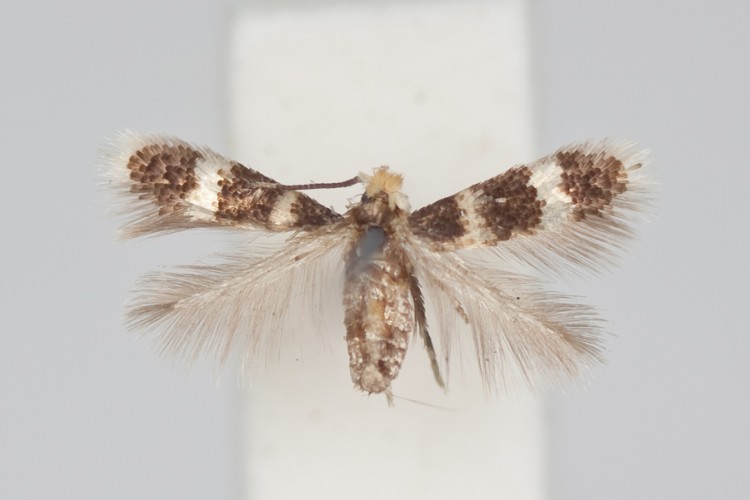 Stigmella diffasciae (Nepticulidae)
Pa Chris Grinter, sou Jiye 22, 2011 Li te yon ti tan depi dènye defi a Cut, men this is a softball. Mwen espere yo te jis twò parese yo jwenn yon imaj plis apwopriye…
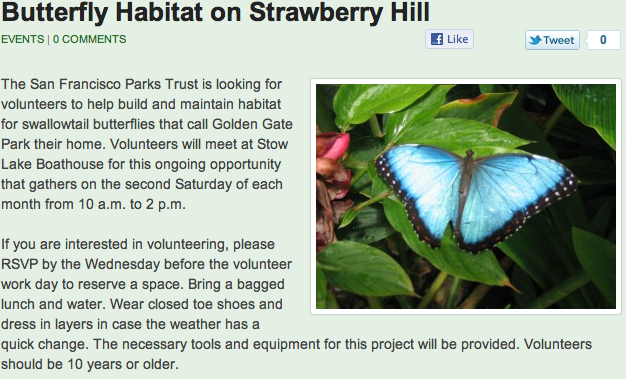
Pa Chris Grinter, on July 19, 2011 Ki sa ki ta Jezi fè si li te gen kèk tan lib – petèt geri yon maladi, fini yon lagè, oswa manje ap mouri grangou nan – men na, tout moun wè vini. Poukisa nou pa choke yo nwayo a – boule figi ou sou yon resi Walmart! Omwen, that’s what a couple in South Carolina believe to have found, yon Walmart receipt with Jesus’s face on it. This isn’t exactly new or exciting, humans have a wonderful ability to recognize a face in just about anything. Jesus and other characters “appear” on random things all the time, and even in 2005 a shrine was built to the Virgin Mary around a water stain in a Chicago underpass.
Pareidolia anyone? Aktyèlman, that face looks pretty convincing, I’m not too sure this wasn’t just faked or “enhanced”. The closeups even look like there are fingerprints all over it. Since I don’t have a walmart anywhere near me or a walmart receipt on hand I can’t determine how sensitive the paper is and how easy it would have been to do – but how long do you think before it shows up on ebay? Nan nenpòt evenman, it looks much more like James Randi to me than Jesus (at least we actually know what Randi looks like!).
 from CNN
Pa Chris Grinter, sou Jiye 18th, 2011 Plis pase sou Arthropoda, parèy SFS Blogger Michael Bok pataje yon imaj de zanmi jaden li, Plugg krapo la gwo pyebwa. Premye panse m 'te nan yon krapo pyebwa menm jan an ki ante akeyi m tout kote mwen te ale nan Santa Rosa National Park, Kosta Rika. Evidamman di, Kosta Rika instills yon abitid toudenkou de double tcheke tou sa ou gen pou fè. Espès sa a ke yo rekonèt kòm krapo lèt la (Phrynohyas venulosa) pou kantite abondan yo nan sekresyon lakte blan toksik. Youn nan premye istwa Dan Janzen te rakonte m pandan m te avè l nan Santa Rosa te sou espès sa a – ak aksidantèlman fwote je l apre li kenbe l. Erezman la avèg ak boule te sèlman tanporè.
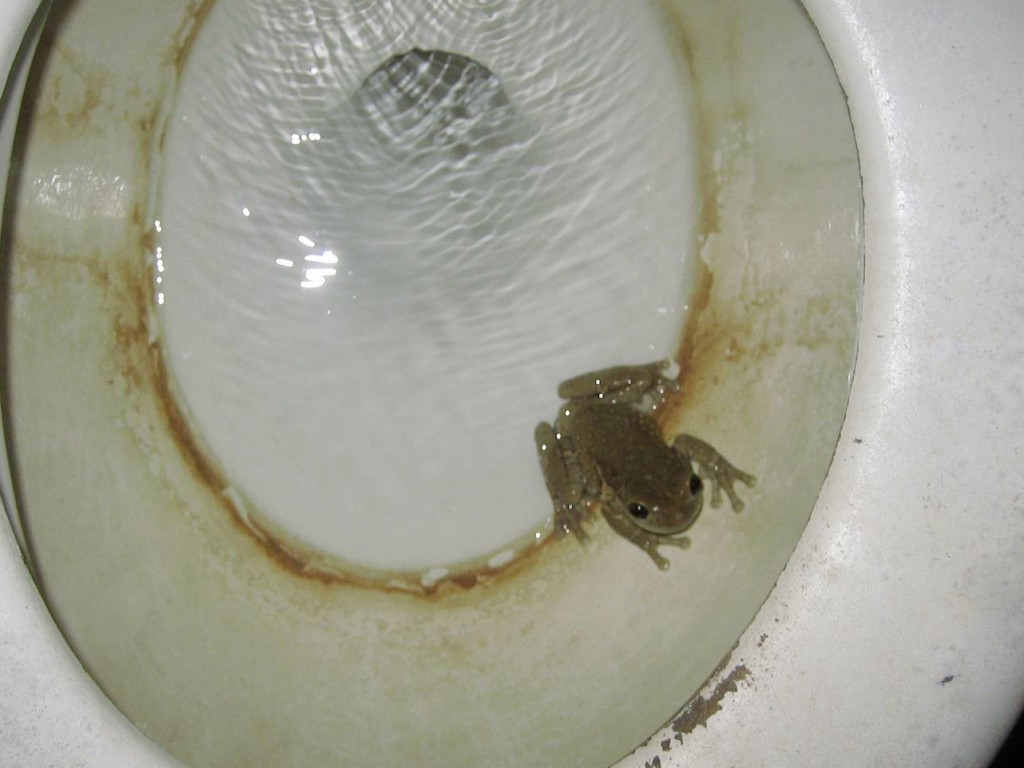 Krapo Lèt: Phrynohyas venulosa
Pa Chris Grinter, sou Jiye 18th, 2011 I’ll keep the ball rolling with Arctiinae and post a photo today of Ctenucha brunnea. This moth can be common in tall grasses along beaches from San Francisco to LA – although in recent decades the numbers of this moth have been declining with habitat destruction and the invasion of beach grass (Ammophila arenaria). But anywhere there are stands of giant ryegrass (Leymus condensatus) you should find dozens of these moths flying in the heat of the day or nectaring on toyon.
 Ctenucha brunnea (Erebidae: Arctiinae)
Pa Chris Grinter, on July 12th, 2011 Oke jan ou ka devine sijè a se pa chokan jan tit mwen sijere, men mwen pa t 'kapab ede men vire soti nan atik la Guardian. Mwen vrèman jwenn li komik lè mwen rankontre nenpòt bagay ki di syantis yo “sezi”, “konble”, “choke”, “sezi”, – Mwen devine sa se yon sijè pou yon lòt fwa… Poutan a vrèman papiyon fre te parèt nan la “Sou entènèt jwèt Papiyon sansasyonalis” ekspozisyon nan mize Britanik nan Lond – yon gynandromorph bilateral! Gadyen an rapòte jodi a ke echantiyon sa a nan Papilio memnon jis parèt epi li kòmanse trase ti foul moun nan vizitè. Mwen konnen mwen ta renmen wè youn nan sa yo vivan ankò – byenke sitiyasyon an zou ta retire byen yon ti jan nan eksitasyon an. Mwen panse ke sèl bagay ki pi enteresan pase wè youn nan sa yo ap viv nan jaden an would be to net one myself!
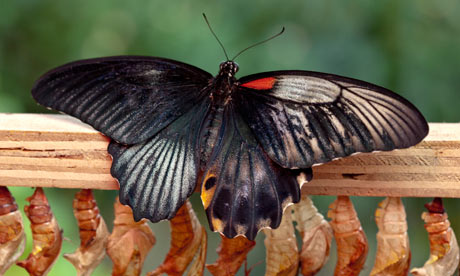
One little thing tripped my skeptical sensors and that is the quote at the end of the article taken from the curator of butterflies, Blanca Huertas. “The gynandromorph butterfly is a fascinating scientific phenomenon, and is the product of complex evolutionary processes. It is fantastic to have discovered one hatching on museum grounds, particularly as they are so rare.”
Oke, I don’t specifically see how these are a “product of … evolutionary processes” inasmuch as tout life in tout forms is a product of evolution. These are sterile “glitches” that are cool, but not anything that has been specifically evolved for or against. Perhaps it would be more adept to call this a fascinating process of genetics (which the article actually describes with accuracy). Epitou – papiyon parèt tankou granmoun epi kale kòm cheni – men sa se jis m 'yo serye.
Pa Chris Grinter, sou Jiye 11yèm, 2011 Vè jodi a se yon espès bèl ak ra soti nan SE Arizona ak Meksik: Lerina incarnata (Erebidae: Arctiinae). Menm jan ak anpil espès lòt jou vole li se briyan koulè ak byen gen anpil chans aposematic. Apre yo tout, plant lan lame a se yon letron ak cheni a se jis kòm sansasyonèl (anba a).
 Lerina incarnata (Erebidae: Arctiinae)
This image of an old, spread specimen hardly does the animal justice, but one lucky photographer found a female ovipositing at the very top of a hill outside of Tucson, Arizona. While you’re at it go check out some of Philip’s other great photographs on SmugMug.
 Lerina incarnata - Philip Kline, BugGuide As I mentioned above this moth also has an equally impressive caterpillar that feeds on Ascleapias linaria (pineneedle milkweed).
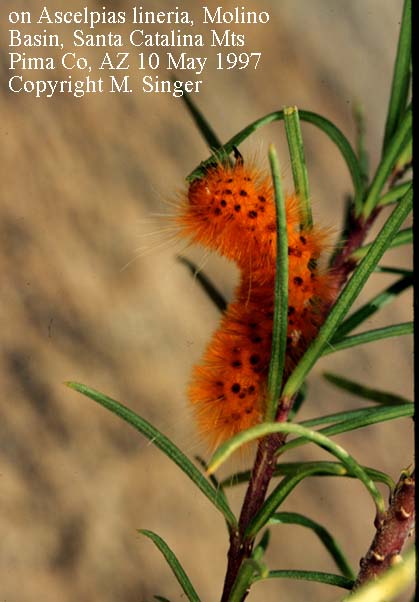
Pa Chris Grinter, le 5 jiyè, 2011 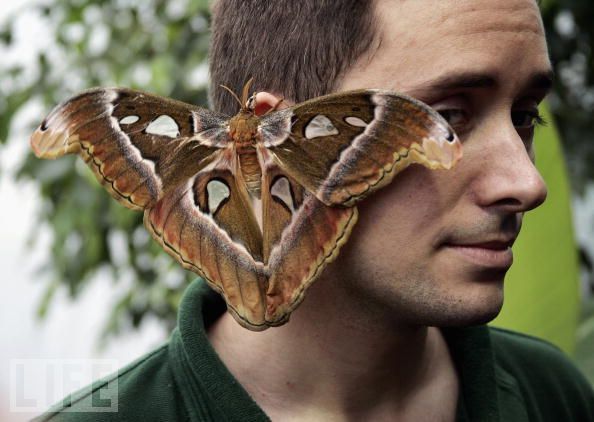
Li sanble tankou gen yon predominans nan lejand iben ki enplike ensèk grenpe an figi nou pandan ke nou dòmi. mit la ki pi popilè se yon bagay sou liy yo nan “ou manje 8 areye yon ane pandan y ap dòmi“. Aktyèlman lè ou google ke nimewo a chenn nan 4 a 8… jiska yon liv? Pa bagay etone jwenn se konsa ekzajere sou entènèt, espesyalman lè li enkyetid arachnophobia a tout tan tèlman popilè. Mwen doute manje yo an mwayèn Ameriken plis pase yon areye kèk sou tout lavi yo; lakay ou tou senpleman pa ta dwe rale ak anpil areye ke yo fini nan bouch ou chak swa! Yon mit menm jan an se toujou yon mit men ki gen yon grenn verite – ki earwigs rfuj nan sèvo ou nan mitan lannwit yo ponn ze. Li se pa vre ke earwigs yo parazit imen (Erezman), men yo fè gen yon predispozisyon rale nan sere, mouye kote. Li se posib ke sa a te yon souvan ensidan ase nan Nou old Angletè ki earwig la te touche non sa a notwa. Ravèt te tou te dokimante kòm zòrèy-spelunkers – men nenpòt ensèk crawly ke sa ta kapab ap mache sou nou nan mitan lannwit te kapab limajinè fini nan youn nan ouvèti nou an.
Mwen te sepandan pa janm tande pale de yon rale vè nan yon zòrèy, jouk tan mwen te vini atravè istwa sa a jodi a! Mwen devine yon Noctuid konfonn yon jan kanmenm te fini nan zòrèy ti gason sa a, byenke mwen pa ka ede men mande si li te mete l 'la tèt li… Papiyon yo pa anjeneral ateri sou moun pandan ke yo ap dòmi ni pou moun ki tendans jwenn mouye, tach sere. Men, lè sa a ankò anyen se posib, kèk noctuids fè rale anba ekòs oswa fèy nan lajounen an pou kache san danje. Mwen menm te vin atravè yon lòt istwa nan yon zòrèy-vè fòme UK a (pa sa ki Mail la chak jou se yon sous bon repitasyon).
Natirèlman, kèk sous nouvèl parese yo lè l sèvi avèk dosye foto nan “papiyon” olye pou yo kopye foto a nan istwa orijinal la. Li nan siplemantè hilarious paske yon sèl nan foto yo itilize se nan yon nouvo espès vè dekri ane pase a pa Bruce Walsh nan Arizona. Lithophane leeae te tap sou blog mwen an de fwa anvan, men pa janm tankou sa a!
Sou yon nòt fèmen isit la se yon powèm pa Robert cording (tou kote imaj la pi wo te jwenn).
konsidere sa a: yon mit k'ap manje rad ta vole nan zòrèy yon nonm la
Yon jou swa òdinè nan plezi inapèsi.
Lè vè a bat zèl li yo, tout van yo
Sou latè ranmase nan zòrèy li, gwonde tankou pa gen anyen
Li te janm tande. Li tranbl ak tranbl
tèt li, gen fouye li gwo twou san fon madanm nan zòrèy li
Ak yon Q-tip, men gwonde a pa pral sispann.
Li sanble tankou si tout pòt yo ak fenèt
Nan kay li te bwote nan once-
Jwe nan etranj nan sikonstans sou ki
Li pa janm te gen kontwòl, men ki li te kapab inyore
Jouk aswè disparèt tankou si li te gen
Pa janm te rete li. Kò l 'pa gen okenn ankò
Sanble pwòp tèt li; li urleman nan doulè nwaye
Soti van an andedan zòrèy li, ak madichon Bondye,
Ki moun ki, Anons sa pibliye depi, te yon jeneralizasyon Benign
Nan yon mond ale ansanm byen ase.
Sou tout wout la nan lopital la, madanm li sispann
Machin nan, di mari l 'jwenn soti,
Yo chita nan zèb la. Pa gen okenn limyè machin,
Pa gen ekleraj, pa gen okenn lalin. li pran
Yon flach soti nan lòj la gan
Ak kenbe l 'sou kote zòrèy l', li, enkrwayabl,
mit k'ap manje rad la ta vole nan direksyon pou limyè a. je l '
Èske mouye. Li santi l tankou si li la rete konsa yon premye abitan blan
Sou rivaj la nan yon mond inatandi.
Lè l 'bay manti tounen nan zèb la, li se yon ti gason
Yon fwa ankò. Madanm li se klere byen bèl flach la
Nan syèl la ak gen sèlman silans la
Li pa janm te tande, ak wout la ti
Nan limyè yon kote ale li pa janm te gen.
- Robert cording, Komen lavi: Powèm (Fort Lee: CavanKerry Sur, 2006), 29-30.
Pa Chris Grinter, sou 30 jen, 2011 
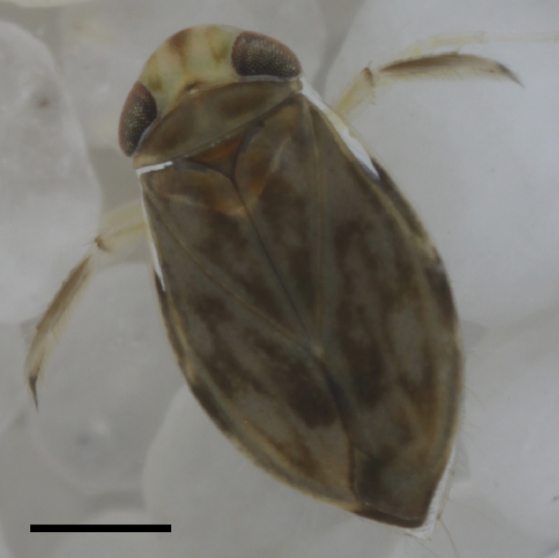 Micronecta Scholtzi Ti mòn yo nan peyi Ewopeyen an yo vivan nan koral la nan renmen, kriyan, pinèz akwatik gason. Ti ensèk ki anwo a, Micronecta Scholtzi (Corixidae), mezire nan yon kolosal 2.3mm e ankò pwodui yon son klike / buz fasil moun ka tande zòrèy anwo sifas dlo a. Pou mete sa nan pèspektiv: eseye tande yon moun ap pale anba dlo pandan y ap kanpe bò pisin se prèske enposib, Men, ensèk sa a minit jenere yon klik byen fò ase yo dwe fè erè pou yon atwopod terès. Pandan ke sa pa son twò enpresyonan lè nou antoure pa lòt ensèk byen fò tankou sikad la, M. Scholtzi Li vin tounen yon bèt ki gen gwo fòs lè w konsidere gwosè kò a ak mwayen son an ap pwopaje pou rive nan zòrèy nou.. Mete nan nimewo entansite nan klik yo anba dlo ka rive jiska 100 dB (Nivo Presyon Son, SPL). Retresi nou nan mond lan ensèk ak pwodiksyon son sa a egal a yon jackhammer nan menm distans la! Kidonk, sa ki sou tè a te pèmèt ti ensèk sa a fè bri sa a epi ale ak li nan yon monn plen predatè?
Otè yo natirèlman montre kouman rezilta sa yo etone. Premye bagay ki vin aparan se ke bato dlo yo pa dwe gen okenn predatè oditif paske yo fondamantalman ap naje alantou fè pi bri fizikman posib pou nenpòt ti bèt nenpòt kote.. Vrèman sa a se pa twò etone paske pifò predatè anba dlo yo se chasè estrikteman vizyèl (lav demwazèl, pinèz dlo ak insect elatriye…). Li trè posib ke seleksyon seksyèl te gide devlopman nan apèl stridulatory sa yo nan nivo sa yo etonan.. Dezyèm bagay ki pi etone a klè yon fwa ou fè yon grafik jis ki jan fò ensèk sa yo gen rapò ak gwosè kò yo. Nan tèt graf la se dofen nan boutèy (T. tronke) ak sonar pi popilè li yo. Men, pi gwo ensèk la se aktyèlman ti ensèk nou an ki anba a goch ak rapò ki pi wo ant son ak gwosè kò. (31.5 ak yon mwayen de 6.9). Pa gen okenn lòt bèt li te ye vini pre. Men, li posib ke plis egzamen sou lòt ensèk akwatik ka bay rezilta ki sanble si se pa plis etone!
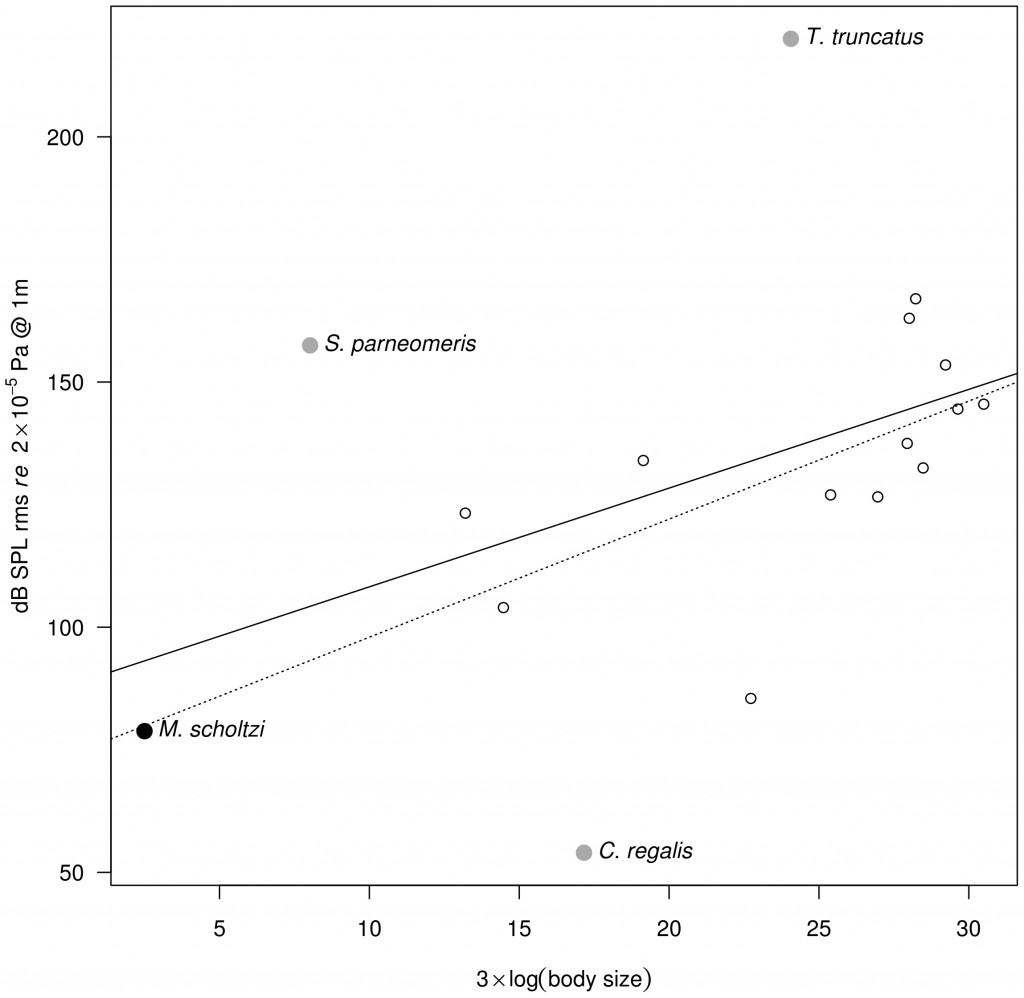
Pou yo ka pi egzak sou la “kriyan”, pinèz yo (pinèz nan ka sa a kòrèk; Corixidae yo fè pati lòd Hemiptera – pinèz yo vre) gen chans rive nan stridulating – fwote ansanm de pati yo jenere son olye pou yo rann lè a, tanbou, elatriye… Nan atik la otè yo espekile ke la “son pwodwi pa fwote yon pars stridens sou paramere dwat la (apendis jenital) kont yon Ridge sou lòb gòch wityèm segman nan vant [15]”. San yo pa rale sitasyon yo, li parèt ke stridulation gason nan genus la byen dokimante pou atraksyon konpayon. Ak jan ou ta atann, plòg nouvèl ak jounalis syans li “apendis jenital” epi tradwi sa nan pati gason: epi ou fini ak istwa tankou sa a. Fonksyon paramèr yo ka tradui yon fason ki sanble ak mandib paske yo se estrikti opoze. (anjeneral ame ak cheve) pou atrab. Nan itilizasyon egzak yo ka diferan pa espès oswa menm lòd, men yo trè diferan fòm pati gason an (=edeagus) paske yo tou senpleman ede fasilite kwazman epi yo pa bay okenn espèm. Se konsa, an reyalite ou gen jenital “claspers” ak yon “pati nan squealing”. Ak pi bon ilistrasyon an nan yon pars stridens se sou la ansyen blog Archetype. Estrikti sa a make anba a an jòn (ak rive egziste sou vant foumi a). Men an brèf – li se yon sifas ki gen siyon regilye ki sanble ak yon planch lave. Nan fen fraz ki site pi wo a ta dwe tradui nan “de estrikti nan pwent vant la ki fwote ansanm tankou de dwèt ki kase”.
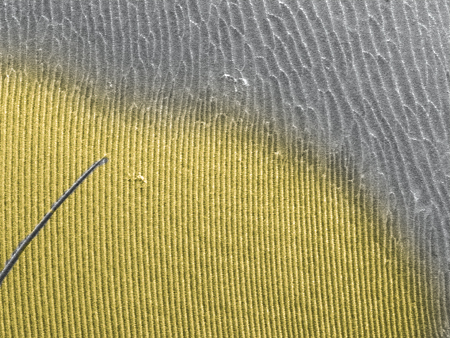 Detay nan pars stridens yo (an jòn) sou tèrgite nan vant ki soti nan yon travayè Pachycondyla villosa (Scanning Electron Micrograph, Roberto Keller/AMNH) Continue reading The incredibly loud world of bug sex
Pa Chris Grinter, on June 20th, 2011 I’m going to keep the ball rolling with this series and try to make it more regular. I will also focus on highlighting a new species each week from the massive collections here at the California Academy of Sciences. This should give me enough material for… at least a few hundred years.
 Grammia edwardsii (Erebidae: Arctiinae) This week’s specimen is the tiger moth Grammia edwardsii. Up until a few years ago this family of moths was considered separate from the Noctuidae – but recent molecular and morphological analysis shows that it is in fact a Noctuid. The family Erebidae was pulled out from within the Noctuidae and the Arctiidae were placed therein, turning them into the subfamily Arctiinae. OK boring taxonomy out of the way – all in all, it’s a beautiful moth and almost nothing is known about it. This specimen was collected in San Francisco in 1904 – in fact almost all specimens known of this species were collected in the city around the turn of the century. While this moth looks very similar to the abundant and widespread Grammia ornata, close analysis of the eyes, wing shape and antennae maintain that this is actually a separate species. I believe the last specimen was collected around the 1920’s and it hasn’t been seen since. It is likely and unfortunate that this moth may have become extinct over the course of the last 100 years of development of the SF Bay region. Grammia, and Arctiinae in general, are not known for high levels of host specificity; they tend to be like little cows and feed on almost anything in their path. So it remains puzzling why this moth wouldn’t have habitat today, even in a city so heavily disturbed. Perhaps this moth specialized in the salt marsh areas surrounding the bay – which have all since been wiped out due to landfill for real-estate (1/3 of the entire bay was lost to fill). Or perhaps this moth remains with us even today but is never collected because it is an evasive day flying species. I always keep my eye out in the park in spring for a small orange blur…
|
Dout
|














